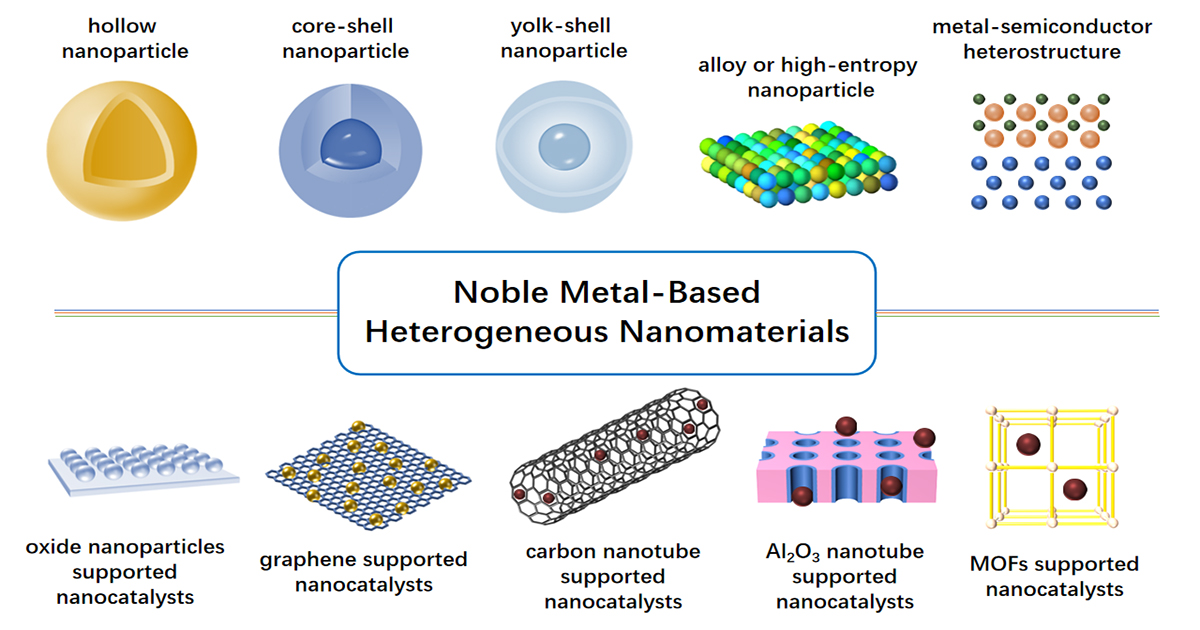Fabrication of Noble Metal-Based Heterogeneous Nanomaterials: Toward High-Efficiency Catalysis
A special issue of Catalysts (ISSN 2073-4344). This special issue belongs to the section "Catalytic Materials".
Deadline for manuscript submissions: 5 March 2026 | Viewed by 155

Special Issue Editor
Interests: noble metal-based nanomaterials; surface-enhanced Raman scarttering; metal-enhanced fluoresecence; catalysis
Special Issue Information
Dear Colleagues,
The present Special Issue, entitled “Fabrication of Noble Metal-Based Heterogeneous Nanomaterials: Toward High-Efficiency Catalysis”, is dedicated to gathering research on the fabrication of noble metal-based heterogeneous nanomaterials and their application in high-efficiency catalysis. Noble metal-based nanomaterials with unique electronic, optical, and catalytic properties have attracted much attention, while the rational design of their heterogeneous structures further enables the regulation of catalytic activity, selectivity, and stability for high-efficiency catalysis—key to addressing challenges in energy and environmental fields. Noble metal-based nanomaterials with tailored structures, including but not limited to hollow, core–shell and yolk–shell nanoparticles, alloy and high-entropy alloy nanoparticles, and metal–semiconductor heterostructures, serve as the fundamental building blocks for high-efficiency catalysis, as their morphology, composition, and interface properties directly dictate catalytic performance. Heterogeneous supported noble metal-based nanocatalysts exhibit potential including (but not limited to) plasmon-enhanced photocatalysis, electrocatalysis, and fuel cells. The diverse support materials cover different dimensionalities: 0D (e.g., oxide nanoparticles), 1D (e.g., carbon nanotubes, Al₂O₃ nanotubes), 2D (e.g., graphene), and 3D (e.g., mesoporous silica/carbon, metal–organic frameworks). In addition to research on the fabrication and application of noble metal-based heterogeneous nanocatalysts, this Special Issue also strongly encourages contributions that discuss the theoretical calculations, single-atom catalysis, and the related studies in frontier catalytic fields. Original research articles, review articles, short communications, and perspective articles are all welcome.
If you would like to submit papers to this Special Issue or have any questions, please contact the in-house editor, Ms. Rita Lin (rita.lin@mdpi.com).
Prof. Dr. Jianhui Yang
Guest Editor
Manuscript Submission Information
Manuscripts should be submitted online at www.mdpi.com by registering and logging in to this website. Once you are registered, click here to go to the submission form. Manuscripts can be submitted until the deadline. All submissions that pass pre-check are peer-reviewed. Accepted papers will be published continuously in the journal (as soon as accepted) and will be listed together on the special issue website. Research articles, review articles as well as short communications are invited. For planned papers, a title and short abstract (about 250 words) can be sent to the Editorial Office for assessment.
Submitted manuscripts should not have been published previously, nor be under consideration for publication elsewhere (except conference proceedings papers). All manuscripts are thoroughly refereed through a single-blind peer-review process. A guide for authors and other relevant information for submission of manuscripts is available on the Instructions for Authors page. Catalysts is an international peer-reviewed open access monthly journal published by MDPI.
Please visit the Instructions for Authors page before submitting a manuscript. The Article Processing Charge (APC) for publication in this open access journal is 2200 CHF (Swiss Francs). Submitted papers should be well formatted and use good English. Authors may use MDPI's English editing service prior to publication or during author revisions.
Keywords
- noble metallic nanomaterials
- core–shell and yolk–shell nanoparticles
- hollow nanoparticles
- alloy and high-entropy alloy
- metal–semiconductor heterostructure
- mesoporous nanomaterials
- single-atom catalysis
- plasmon-enhanced photocatalysis
- electrocatalysis
- fuel cells
Benefits of Publishing in a Special Issue
- Ease of navigation: Grouping papers by topic helps scholars navigate broad scope journals more efficiently.
- Greater discoverability: Special Issues support the reach and impact of scientific research. Articles in Special Issues are more discoverable and cited more frequently.
- Expansion of research network: Special Issues facilitate connections among authors, fostering scientific collaborations.
- External promotion: Articles in Special Issues are often promoted through the journal's social media, increasing their visibility.
- Reprint: MDPI Books provides the opportunity to republish successful Special Issues in book format, both online and in print.
Further information on MDPI's Special Issue policies can be found here.





